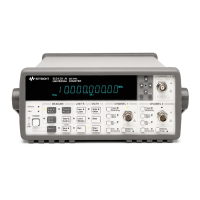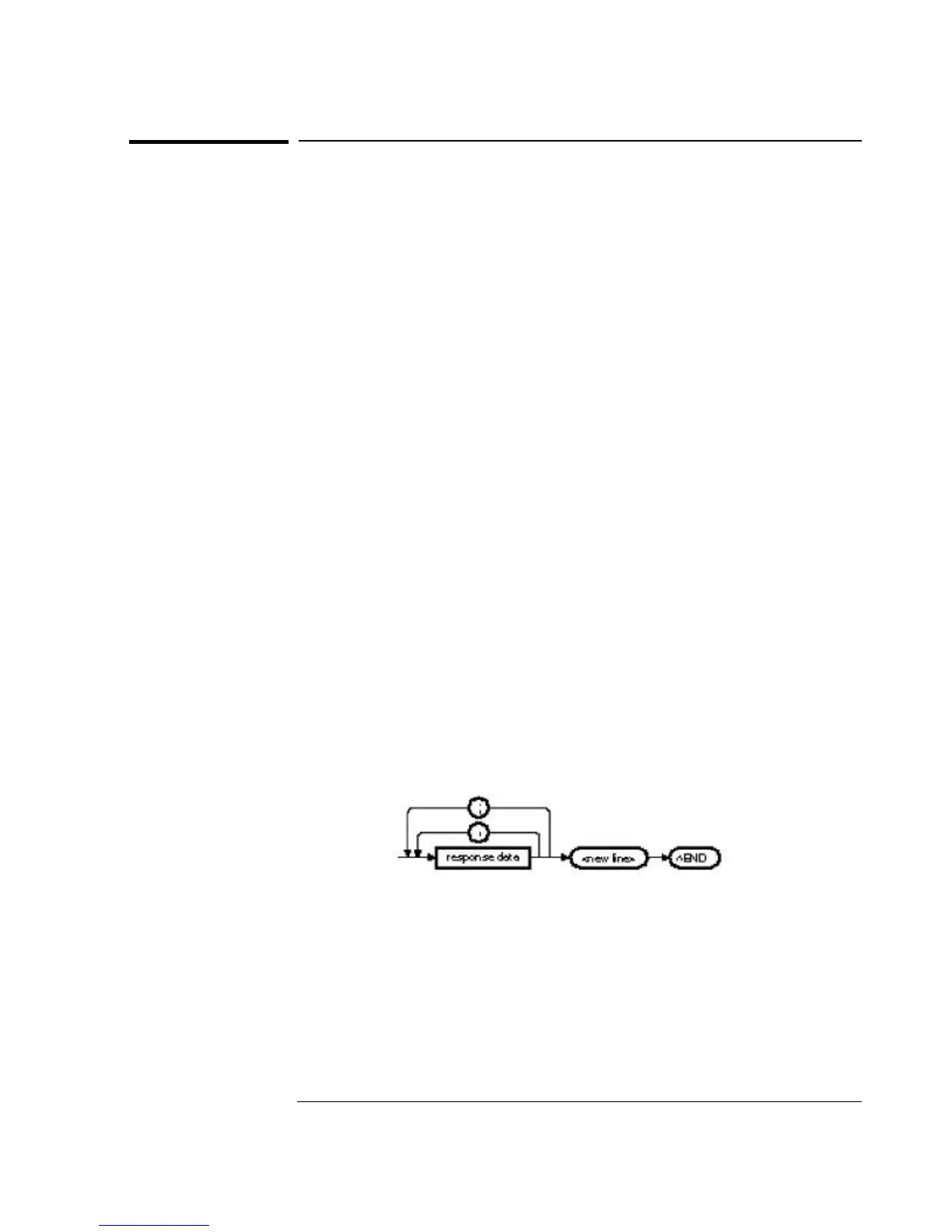Chapter 3 Programming Your Universal Counter for Remote Operation
Overview of Response Message Formats
3-16 Programming Guide
Overview of Response Message Formats
Response Messages
Response messages are data sent from the Counter to a computer in response to a
query. (A query is a command followed by a question mark. Queries are used to
find out how the Counter is currently configured and to transfer data from the
Counter to the computer.)
After receiving a query, the Counter interrogates the requested configuration and
places the response in its HP-IB output queue.
The output message remains in the qu eue until it is read or another command is
issued. When read, the message is transmitted across the HP-IB to the computer.
You read the message by using some type of enter statement that includes the
device address and an appropriate variable. Use a print statement to display the
message. The following HP BASIC example illustrates how to query the Counter
and display the message:
10 OUTPUT 703;":INP:COUP?"
20 ENTER 703; A$
30 PRINT A$
40 END
Response Message Syntax
Figure 3-5 shows the simplified syntax of a Response Message. Response
messages may contain both commas and semicolon separators. When a single
query command returns multiple values, a comma is used to separate each item.
When multiple queries are sent in the same program message, the groups of data
corresponding to each query are separated by a semicolon. Note that a <new line>
^END is always sent as a response message terminator.
NOTE:
<new line> = ASCII character decimal 10
^END = EOI asserted concurrent with last byte
; = multiple response separator (ASCII character decimal 59)
, = data separator within a response (ASCII character decimal 44)
Figure 3-5. Simplified Response Message Syntax Diagram

